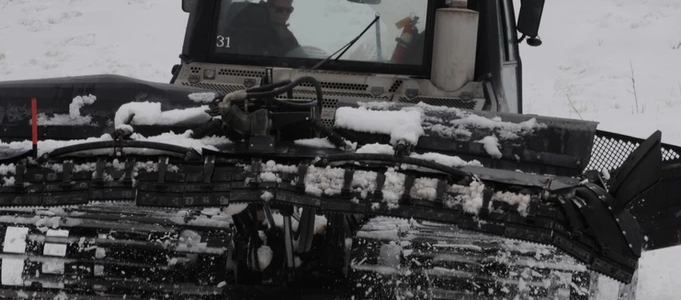
It may seem premature to begin thinking of winterizing your fleet months ahead of the winter season, but now is the perfect time to do so. There are multiple reasons to get a head start on this but one is so important that it alone should get you motivated to start the process today: a shortage of vehicle production due to the semiconductor chip shortage means replacing faulty plows and other vehicles will become a problem. In summary, you will need to maximize the fleet you currently have and that starts with proper maintenance.
We have compiled below six ways to winterize your vehicles now so they better serve you all through the upcoming winter:
Make sure your winter wipers are in prime condition
Winter wipers come with a rubber covering that keeps ice from collecting on the blades. Travelling with a bad set of wipers can be dangerous if the rubber has deteriorated or has become torn from sitting under the hot summer sun.
Switch to winter tires. In the winter, ice and sleet contribute to dangerous, slippery road conditions. Below 7 degrees Celsius, around 44.7 degrees Fahrenheit, regular tires (all-season or summer type) harden and begin to lose their traction on the road. The right set of tires can offer huge advantages in bad winter weather.
Monitor tire pressure. Tire pressure drops roughly 1-2 pounds for every 10 degrees Fahrenheit that the temperature lowers. On newer vehicles, an in-vehicle alert for low tire pressure will be visible to the driver; older vehicles require drivers to check tire pressure manually. Geotab data can easily offer tire pressure information through its fleet management solutions.
Vehicle batteries can behave differently in winter. Make sure your drivers don’t get stranded at any point without being able to turn on the heater by prioritizing battery health checks. A vehicle’s battery and charging system might work well during spring and summer, but in winter your vehicles need a little more “juice.” More power is needed to start your engine in the cold, and you also get less power from your battery.
Stay on top of regular servicing. Certain vehicle components have a higher risk of failure in the winter. Bad hoses, belts, water pumps and spark plugs can cause your drivers to become stranded on the side of the road. Implement regular, preventive maintenance servicing during the winter months with automation. A predictive maintenance system can help decrease downtime and costs, and minimize unforeseen component failure. By pre-scheduling maintenance before the change in seasons, you can help ready the fleet for harsh winter conditions. Learn more about proactive maintenance by giving us a call today.
Prevent on-road breakdowns with Electrical Systems Rating (ESR) in MyGeotab. The rating system measures the health of a vehicle’s electrical system on a scale from 0 to 100, with four status categories: good, fair, caution and poor. At Caution, the fleet should schedule maintenance for the vehicle; at Poor the battery is likely to fail. An added benefit to fleet managers is that they can avoid preventative battery replacements unless the ESR reaches the Caution level. Ratings are calculated daily for every vehicle in the fleet.
Ready to optimize your winter fleet? Let us show you how simple it is to use our web-based software and fleet tracking devices to manage your winter operations fleet.

